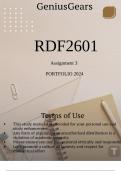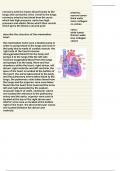Exam (elaborations)
RDF2601 Assignment 3 PORTFOLIO 2024 (Questions & Answers)
- Institution
- University Of South Africa
Whether used for exam preparation or as a supplementary learning aid, this document equips students with the tools they need to succeed academically in this unit.
[Show more]




